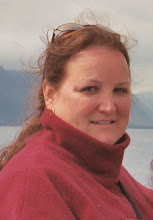In Japan, because of their centralized system of education, ESD is embedded within their curriculum and therefore seems to be very well developed throughout the country.
Professor Gregory Smith of Lewis and Clark College spoke about Place- and Community-based Education and Sustainability Education. Place- and community-based education is "a holistic approach to education, conservation, and community development that uses the local community as an integrating context for learning at all ages. It fosters vibrant partnerships between schools and communities both to boost student achievement and to improve community health and vitality—-it involves all aspects: environmental, social, and economic..."
The definition of sustainability may be different for many people, but Professor Smith summarized succinctly what it means to him:
1. don’t eat your seed corn or turn your forests into deserts
2. don’t pump your sewage into your drinking water
3. don’t let some people have so much that others are unable to live secure and meaningful lives.
Dr. Dilafruz Williams from Portland State University, then spoke on Food, Culture and Academics in Learning Gardens: Sustainability Education. In summary, she spoke of the "disconnect" that children and adults have from their food. Seasons and place have become irrelevant because we can buy food whenever we desire, wherever we are. Mangoes, strawberries, citrus, and pineapples are all available at any time of the year… many are clueless about where food comes from, who labored, plowed, and harvested our food? Was it a large agricultural firm that hires immigrants, or a poor, small farmer, fending off buy-outs and trying to protect his 4th generation farm while trying to make ends meet to feed his family? Are the seeds genetically modified? Is the chicken served in the cafeteria prepared by people who spend hours on end at minimum wage, deboning chicken in factories? Is the premier lobster in Western luxury meals coming from another part of the world whose fisheries have crashed due to over-harvesting? What is the cost of food production, not just in financial terms? Chronic hunger? What are the impacts on children and their development? Undernutrition causes almost half of all children deaths. Hunger primarily results from poverty. Without school breakfasts and lunches, many children would not eat. Are we providing the right nutrition? Health problems: obesity, diabetes (1:2 children)...
We all need food.
Dr. Williams then presented examples of school-community relationships built around learning gardens.
The three panel discussions today were presented by American and Japanese teachers and provided many concrete examples about projects related to the environment, food & nutrition, and energy & resources. There are a lot of great ESD projects growing all over the place and many human resources to tap into for help on how to implement ESD curricula into our educational systems.
Late afternoon:

(Right) Though I didn't realize it at the time, on the bus ride to the General Consul's Residence, I sat beside and had a great discussion with Senior Specialist for Personnel Exchange, International Affairs Division, Japanese Ministry of Education, Mr. Hiroaki Motomura . A well-traveled man, Mr. Motomura told me of his 2-month sojourn traveling throughout the U.S., alone and by bus, while a college student. This is Mr. Motomura, speaking at the General Consul's Residence.

(Left) The Consul General and his wife were gracious hosts. Teachers had a great time at their beautiful residence, sitting atop a hill in down town San Francisco and looking out over the Bay and Golden Gate Bridge. Photo: Consul General Mr. Yasumasa Nagamine and Mrs. Nagamine, speaking with Mr. Samuel M. Shephard, former director of Fulbright Japan.

Maki zushi (rolled sushi), ginger (white in the middle), skewered pork, and nigiri zushi (red item on the right. This is another type of sushi that is not rolled, but is served on a small pile of rice.)

Looking at your meal I'm quite sure I would have starved!!! Perhaps zushi atop of an Oreo????
ReplyDeleteSue P
Hello My Friend
ReplyDeleteSounds extremely interesting. Sushi look wonderful. Hope you're enjoying San Fran. What an experience!!